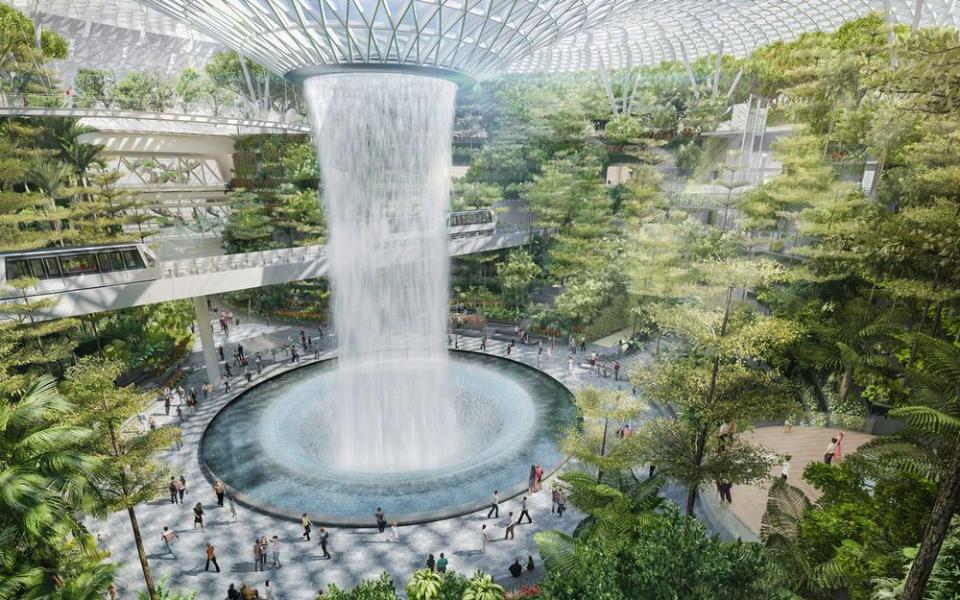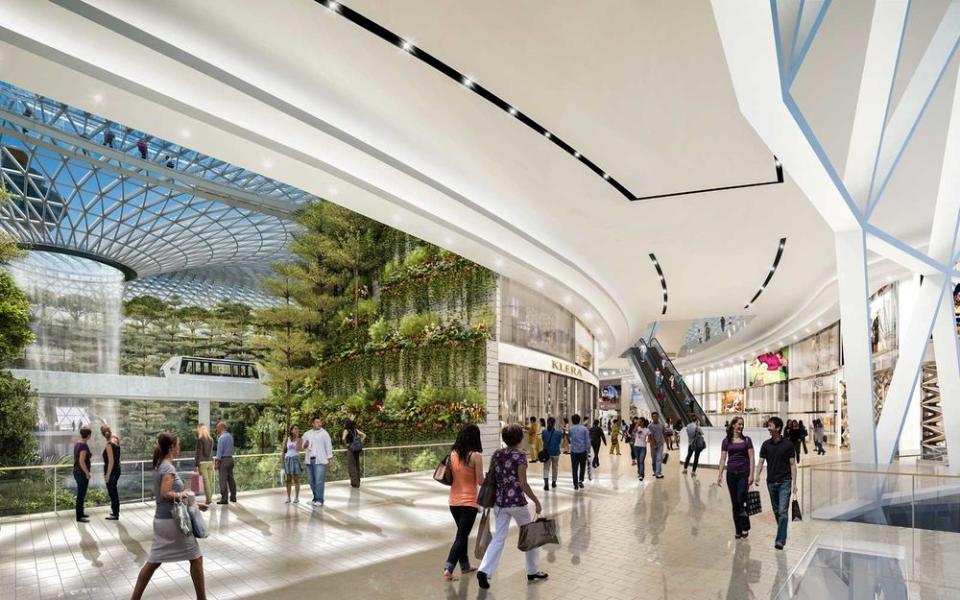Jewel Changi Will Have You Planning a Trip to Singapore Just to Hang Out in the Airport
Singapore's Changi Airport is already the World's Best, and it has no plans to give up the title. An enormous dome-shaped facade made of glass and steel, called Jewel Changi, is due to be finished in the fourth quarter of 2018, opening to the public by early 2019.
Clad in 9,600 pieces of glass and with indoor gardens, walking trails and mazes, Jewel Changi will feature 340 species of planets, including a dedicated Avenue of Trees.
Related: Here's Why Airports Have Carpet
It's an attempt to keep Singapore's already famously green airport at the top, though Jewel Changi will also feature stores, restaurants and a Yotel hotel, as well as a SkyTrain, bridges and travelators to link to the passenger terminals. However, the highlight of Jewel Changi will be a five-story Forest Valley area.
Forest Valley

At the core of Jewel Changi will be Forest Valley, an enormous indoor garden featuring about 2,500 trees and 100,000 shrubs from countries including Brazil, Australia, Thailand and the U.S.
At its center will be Rain Vortex, the world's biggest indoor waterfall at 40 meters (about 131 feet), surpassing the 35-meter indoor waterfall at Gardens by the Bay, an urban nature park also in Singapore. Using rainwater collected by the building’s dome-shaped roof, light shows will make Rain Vortex glow in different colors.
Canopy Park
Elsewhere in Jewel Changi will be Canopy Park, a 150,000-square-foot, 10-story, dome-shaped structure on the roof of Jewel Changi. Inside will be a glass bridge and “sky nets,” suspended three storeys above ground, that visitors can bounce on.
There will also be a couple of mazes — one of them a “mirror maze” that will create illusions — several tube slides, and even bowls of mist for bored kids (and kid-ults) to amuse themselves between flights.
Why You'll Want to Visit Jewel Changi Airport
For a country of 5.6 million people squeezed onto an island bigger than Manhattan, but smaller than the five boroughs of New York, Singapore's expanding of its Changi Airport may seem like overkill. After all, according to the Airports Council International (ACI), Singapore is the only Asian airport in the world's top 20 busiest airports that is not already operating at capacity.
However, it's got a reputation for being a fast and easy airport to travel through, and it wants to stay that way to attract in-transit and layover passengers.

In addition to being named the World's Best airport by Travel + Leisure readers, Changi Airport was been voted Skytrax World's Best Airport by air travelers at the 2017 World Airport Awards for the fifth time running (though runner-up Tokyo's Haneda airport scooped 2017's prize for being the world's cleanest).
In an effort to retain that status — and increase Changi's reputation as a hub airport — there are already plans to build a fifth terminal ready for 2030, which could increase the airport's handling capacity from the current 82 million passengers a year to 150 million.

The Jewel Changi was designed by architect Moshe Safdie, who designed the the Salt Lake City Public Library and the Kauffman Center for the Performing Arts in Kansas City, Missouri. His work on Changi Airport is no fluke; Safdie Architects designed the Marina Bay Sands resort that was completed in 2011 on the Singapore waterfront. PWP Landscape Architecture, which also worked on Marina Bay Sands, is providing landscape architectural design services on the project. Comprised of three 55-story towers connected by the Sands SkyPark, the hotel has become an iconic Singapore sight, and the firm's best-known work by far. Safdie Architects is now also now working on a two residential towers in Singapore linked by three tree-lined bridges, and topped with a “sky pool.”
It's that kind of flair that Changi Airport is hoping will help it keep its reputation as the ultimate layover airport. Most savvy travelers already know about its cheap pay-per-use showers in every terminal, and Terminal 3's free 2.5 hour Singapore tour for those with five-hour layovers.
Other Airport Openings to Watch for in 2018
New airports tend to pop-up in places experiencing a surge in tourism, which at the moment is wherever middle class Chinese tourists want to go. That's certainly true in Japan, which is having to add a swish new terminal at Mount Fuji Shizuoka Airport, which gives arriving passengers an unparalleled view of the iconic mountain.
Related: The Top 10 International Airports
Meanwhile, Berlin Brandenburg Airport Willy Brandt, a forever-delayed $7 billion new airport being constructed adjacent to the current Schönefeld Airport south of the city, is due to open in August 2018.
However, the biggest new airport for 2018 will be the opening in Istanbul, Turkey of the world's biggest airport. Istanbul New Airport, 20 miles north of the Turkish capital, will have an annual passenger capacity of 200 million passengers. The new home for the ever-expanding Turkish Airlines, it's scheduled to open in October 2018.

